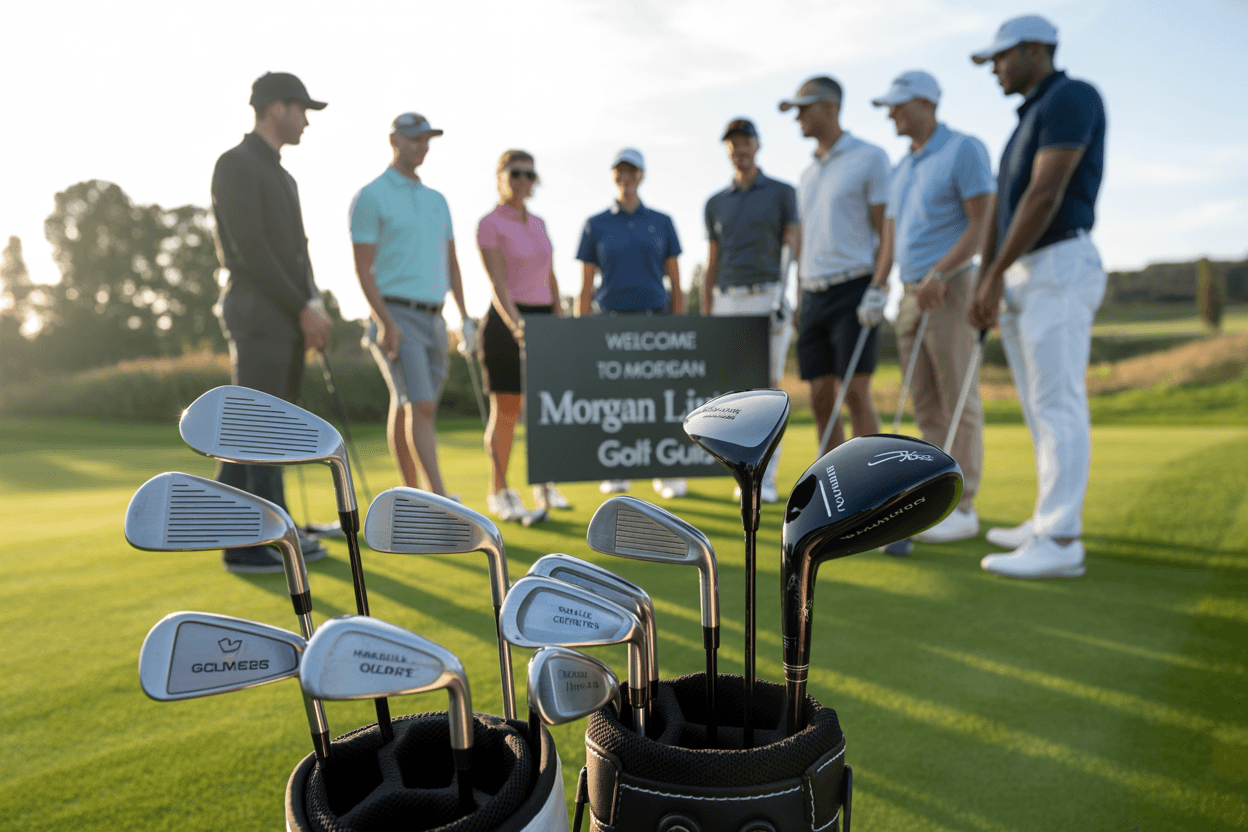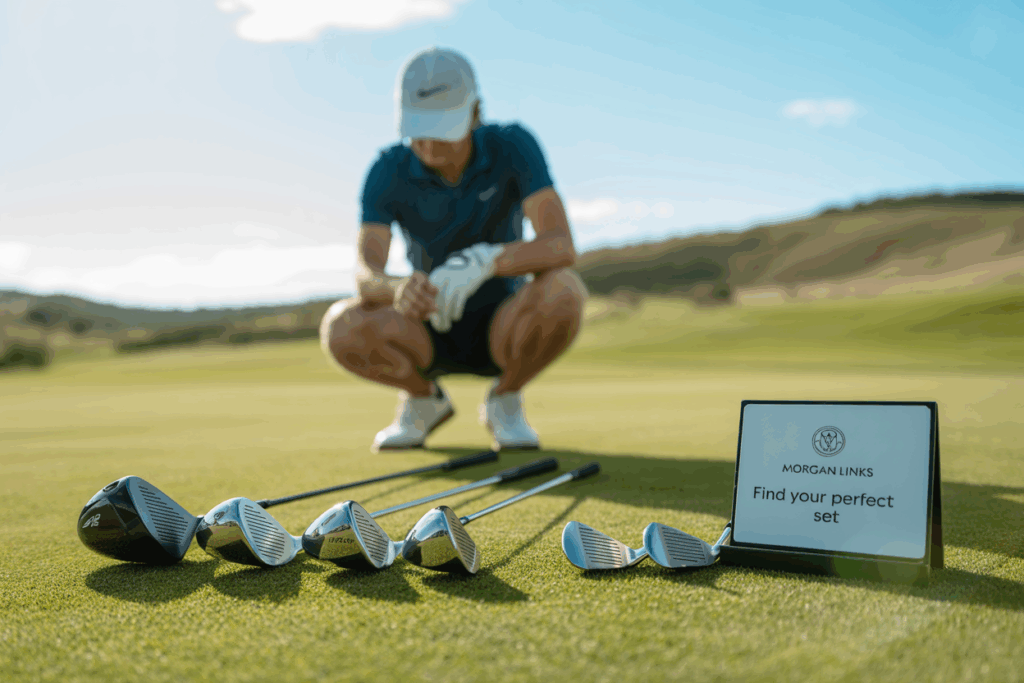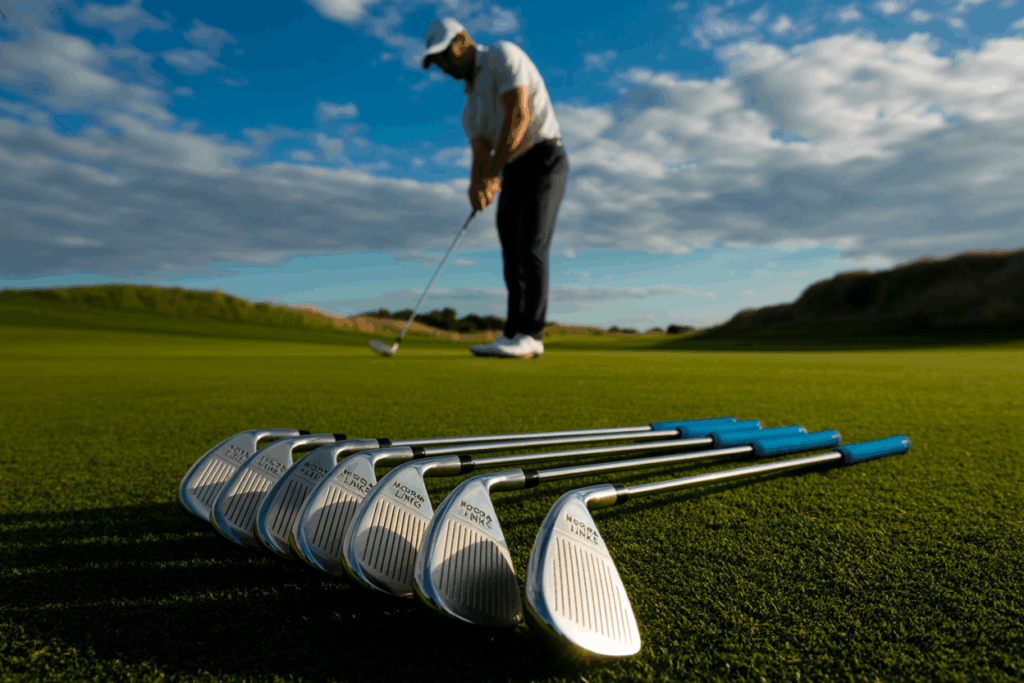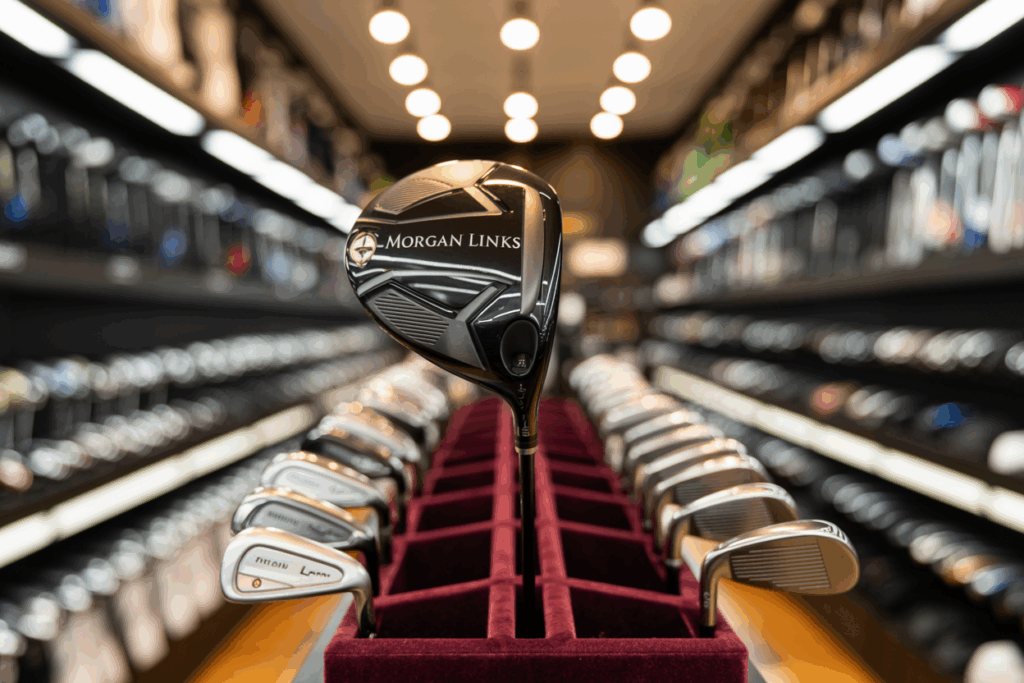Don't miss our holiday offer - up to 50% OFF!

Choosing The Right Golf Clubs: A Comprehensive Guide
Choosing The Right Golf Clubs: A Comprehensive Guide. From types of clubs to factors like loft and shaft material, ensure improved performance on the green!
Hello, golf enthusiasts! I’m Morgan Links, and I’m excited to welcome you to Top Golf Equipment. If you’re on the hunt for guidance in choosing golf clubs that suit your style and improve your game, you’ve come to the right place. Selecting the perfect clubs is more than just a shopping decision—it’s about aligning with the tools that will optimize your performance and enhance your enjoyment on the course. Let’s dive into this comprehensive guide together and make informed choices that bring your game to a whole new level.
Understanding the Importance of the Right Golf Clubs

The Impact on Your Game
Hello again, fellow golfers! I’m Morgan Links, here to talk about a pivotal topic—how the right set of golf clubs can revolutionize your game. Imagine stepping onto the course, confident in every swing because your clubs are precisely suited to your style. Each club is crafted with specific features, influencing everything from your shot’s trajectory to its distance and accuracy. By selecting clubs that align with your swing characteristics and style, you’re not just playing; you’re performing at an elevated level, consistently hitting better shots and lowering your scores.
Boosting Your Confidence
Beyond the physical aspects, the right golf clubs offer a substantial psychological boost. Imagine the confidence surge you feel when you have absolute trust in your equipment. With the right clubs in hand, your focus sharpens, stress reduces, and each swing is executed with intent and assurance. This confidence can be a game changer, positively impacting your overall performance and enjoyment of the game.
Promoting Development and Improvement
Your journey in golf is all about progress, and selecting the right clubs is crucial to this development. Clubs that are fitted to your specifications not only help in achieving a smooth, consistent swing but also aid in refining technique. As you grow and advance in your skills, your clubs should evolve to meet your heightened demands, ensuring that every game is a step forward in your golfing prowess. By choosing equipment that matches your current abilities while also challenging you, you’re setting yourself up for continuous growth and improvement.
Armed with the right tools, you are well on your way to not just playing the game, but mastering it. Let’s continue this journey by diving into the various types of clubs and how each can be your partner in this exciting endeavor!
Knowing the Different Types of Golf Clubs
As you dive deeper into your golfing journey, understanding the different types of golf clubs is essential. Each club in your bag is designed for specific purposes, contributing to a dynamic arsenal that covers every aspect of the game. Let me guide you through the basics to help you make informed choices.
Drivers
Let’s start with the big hitter—the driver. Often hailed as the most important club in your bag, the driver is engineered to maximize distance off the tee. With its larger clubhead and longer shaft, the driver is pivotal for those powerful tee shots on longer holes. When selecting a driver, consider factors like the loft, materials, and clubhead design to match your swing style and preference.
Fairway Woods
Fairway woods are versatile clubs that offer a balance of distance and control, making them ideal for shots off the tee or the fairway. With a smaller clubhead than drivers, fairway woods are adept at providing accuracy and a consistent strike. The loft of these clubs varies and choosing the right one can help optimize your shot trajectory based on your swing speed and course conditions.
Hybrids
Next up, hybrids—a popular choice due to their adaptability and user-friendly design. Serving as a bridge between irons and fairway woods, hybrids are perfect for replacing traditional long irons. Their forgiving nature and ease of use make them suitable for golfers of all skill levels, offering higher launch and greater consistency.
Irons
Irons are the workhorses of your golf bag, essential for approach shots to the green. With smaller clubheads and higher lofts compared to drivers and woods, irons deliver control and accuracy. Ranging from low- to high-numbered, each iron serves a distinct role, with lower numbers providing distance and higher numbers offering finesse around the green.
Wedges
Wedges are specialized for short-range precision. Whether you’re pitching, chipping, or escaping bunkers, wedges—with their high loft angles—provide the control needed for delicate shots. Familiarize yourself with the various types, such as pitching, gap, sand, and lob wedges, each designed for specific situations.
Putters
Finally, the putter is your key player on the green. Designed with a flat clubhead to roll the ball into the hole, putters come in a variety of designs. From traditional blade putters to modern mallet styles, the choice depends on your personal preference for feel and alignment.
By understanding these different types of clubs and their unique features, you’ll be better equipped to build a set that caters to your strengths and maximizes your performance on the course. Stay tuned as we explore more dimensions of club selection next!
Decoding the Numbers on Your Golf Clubs
Understanding the intricacies of your golf clubs goes beyond simply knowing their names and purposes. It’s crucial to grasp what the numbers and specifications mean, as they directly impact your performance on the course. Let’s dive into these details so you can ensure your clubs suit your game perfectly.
Understanding Club Lofts
When we talk about club lofts, we’re referring to the angle of the clubface relative to the ground. This angle plays a pivotal role in determining the trajectory and distance of your shots. For instance, drivers are designed with lower loft angles to achieve longer, lower trajectory shots, perfect for maximizing distance. On the other hand, higher loft angles in irons and wedges help create higher shots that land softly, ideal for approach shots around the green. Grasping these nuances enables you to choose clubs that align with your playing style and the specific demands of each shot.
Picking the Right Shaft
The shaft of a club is crucial to its feel and performance, affecting everything from swing speed to shot accuracy. When selecting a shaft, two main factors come into play: flex and weight. The flex refers to how much the shaft bends during your swing, and can range from extra stiff to ladies’ flex. A stiffer shaft suits faster swing speeds, offering greater control, while a more flexible shaft can help those with slower swings generate more distance. Weight influences swing tempo and comfort, so finding the right combination for your unique swings is vital for optimized performance.
By digging into these specifications and understanding the numbers on your clubs, you’ll be better equipped to make informed decisions that can drive your game forward. Next, we’ll explore selecting your irons based on these insights!
Choosing Golf Clubs Based on Skill Level

Every golfer has a unique journey, and selecting clubs that align with your skill level can greatly enhance your development and enjoyment of the game. Let’s break down the best club options for beginners, intermediate players, and advanced golfers.
Clubs for Beginners
If you’re just starting out, your focus should be on building confidence and developing accuracy. Look for clubs that provide the most forgiveness. Cavity back irons are an excellent choice because they offer a larger sweet spot, which helps minimize the impact of off-center hits. You might also consider hybrid clubs for easier launch and greater distance compared to traditional long irons. Beginner-friendly drivers and fairway woods designed for maximum distance and forgiveness can also be game-changers as you hone your skills.
Clubs for Intermediate Players
As you progress in your golfing journey and become more consistent with your shots, you can start experimenting with clubs that offer enhanced control and shot-shaping potential. Intermediate players often benefit from exploring cavity back or players’ irons, which provide a balance between forgiveness and precision. Additionally, you might start incorporating fairway woods with varying lofts into your bag to tackle different course conditions. Enhancing your short game with wedges that offer better feel and precision can also be beneficial.
Clubs for Advanced Players
For those who are more experienced and have refined their swing mechanics, clubs that offer increased control and workability become indispensable. Advanced players might opt for blade irons, known for their compact design and precise feedback. You’ll likely prioritize finding drivers that maximize distance and control based on your swing speed and flight preferences. Customizable wedges tailored to specific playing conditions and a putter that suits your stroke style complete an advanced player’s arsenal.
By selecting clubs that resonate with your current skill level, you create a foundation for continuous growth and performance improvement. Up next, we’ll delve into maintaining and changing your golf clubs to ensure they remain in optimal playing condition!
Maintaining and Changing Your Golf Clubs

Now that you’re familiar with choosing the right golf clubs based on your skill level, it’s equally important to maintain their condition and know when it’s time for a change. Let’s delve into key practices that ensure your equipment continues to perform optimally.
Regularly Checking Club Conditions
Consistently inspecting your golf clubs can significantly extend their lifespan and maintain performance. Look for wear and tear on grips, shafts, and clubheads. Grips should feel secure and tacky, not slick or worn. Ensure there are no dents or severe scratches in the clubheads that could affect contact with the ball. Regular cleaning and careful storage are also vital. By keeping your clubs in top shape, you’re setting the stage for reliability each time you hit the course.
Knowing When to Replace Your Clubs
Over time, even the most cared-for clubs will show signs of aging. Factors like frequent use, playing environment, and storage conditions can speed up wear. If you’re noticing a decline in performance, such as reduced distance or accuracy despite consistent technique, it might be time to consider replacing some clubs. Additionally, significant technological advances in club design can offer compelling reasons to update your collection, potentially giving you an edge in performance.
The Importance of Customized Fitting
Perhaps one of the most overlooked aspects of club maintenance is the benefit of a professional fitting. Clubs tailored to fit your unique swing characteristics can provide a noticeable improvement in comfort, consistency, and performance. Working with a club fitter ensures that aspects like club length, lie angle, and shaft flex are optimized for your play style, enhancing both playability and enjoyment of the game. Investing in customized fitting can be a game-changer, offering benefits that off-the-shelf clubs might not match.
By dedicating attention to these maintenance practices and knowing when to upgrade, you can significantly enhance your golfing experience, ensuring that your equipment is as finely tuned as your skills. In our next section, we’ll recap our journey through the realm of golf clubs and encourage you to apply these insights for an optimized golfing adventure!
Conclusion
In wrapping up our comprehensive guide, it’s clear that selecting the right golf clubs is paramount to maximizing your potential and enjoyment on the course. With a deep understanding of the various types of clubs and their specific roles, you are well-equipped to curate a set that enhances your game. Remember, the right clubs do more than improve performance—they boost confidence and allow you to play with precision and enjoyment.
As you apply these insights, don’t forget the importance of regular club maintenance to keep your tools in top condition, and consider customized fitting to fine-tune your gear to your unique swing characteristics and style.
Here’s to making informed decisions that align with your goals and elevate your golfing journey. With the right equipment in your bag, enjoy every swing, every round, and every challenge on the green. Thank you for joining me, Morgan Links, on this exciting exploration of golf equipment. Catch you next time, and happy golfing!
